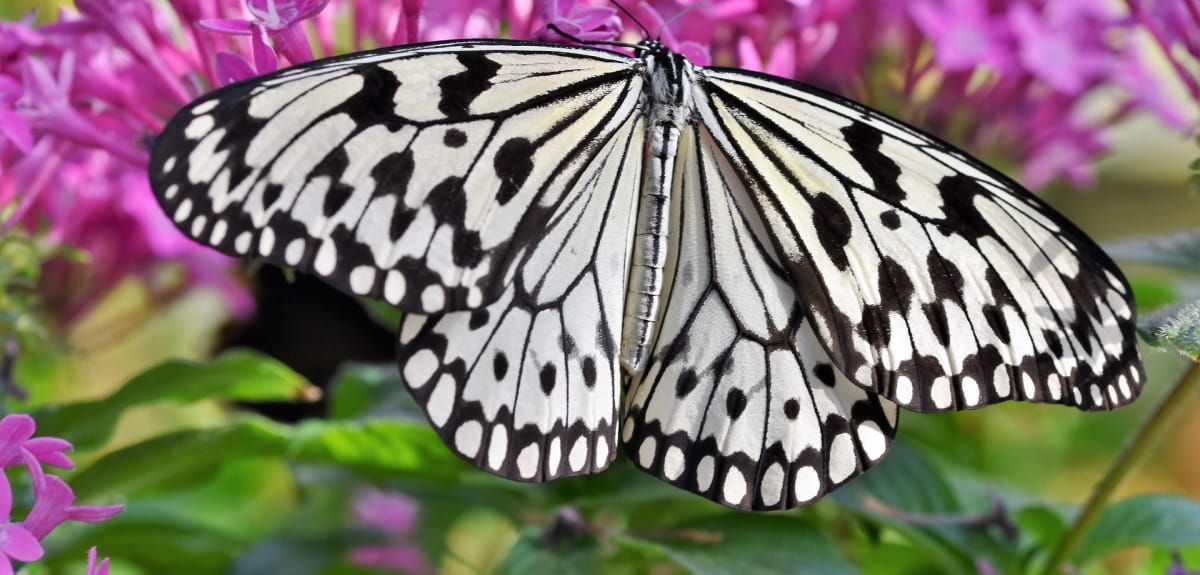
Credit: Ralphs_Fotos
Nature prefers symmetry and simplicity
Research recently published in Proceedings of the National Academy of Sciences by Oxford-led scientists suggests that Mother Nature plays favourites and that she believes in the elegance of simplicity.
From snowflakes to sunflowers, starfish to sharks, symmetry is everywhere in nature. Not just in the body plans which govern shape and form, but right down to the microscopic molecular machines keeping cells alive.
Although there is a larger collection of asymmetrical forms in the natural world, symmetrical patterns seem to occur more often than you would expect if due to sheer random chance.
It is tempting to assume that evolution is looking at the advantages of simple modular and symmetrical shapes just as engineers, architects and Swedish furniture designers do.
Biologists, however, will point out that evolution works one generation at a time – rather than making adaptations for future benefits – and there needs to be an immediate evolutionary advantage for a mutation to stick.
At this stage, it is useful to remind ourselves that there are two stages in evolutionary development. The first is the genetic mutation that causes a variation in a particular physical characteristic (a phenotype) and the second is the natural selection that leads to some traits dominating over others.
‘Most evolutionary theory concentrates on the second "survival of the fittest" step. But what if the first "arrival of variation" step is highly biased towards phenotypes high in symmetry or modularity. Could that lead to the bias towards these traits that we observe in nature,’ said co-author Professor Ard Louis, Department of Physics, University of Oxford.
The researchers put together data from protein clusters, RNA molecules and generic circuits and found that, despite the myriad of different shapes and structures, there was a startling bias towards simple structural symmetry.
Running computer simulations on the same biological systems confirmed the bias in nature. A protein cluster simulation with 13,079,255 different possible structure shapes had only five shapes with the symmetry of a square. All things being equal, that means there would be a five in thirteen million chance of that simple square being returned – which is rather like randomly running into five particular people from the entire population of Tokyo. Yet applying the evolutionary algorithm returned one of those five simple squares 30% of the time.
‘It’s like nature is playing with loaded dice. Those simple symmetrical structures keep on getting thrown up,’ said co-author Dr Chico Camargo, University of Exeter.
The researchers looked to computer science for the secret behind nature’s sleight of hand as they continued their investigation into the bias.
In algorithmic information theory (AIT), the complexity of an object is measured by the length of its shortest description. For example, a sequence of the letters AB a million times could be described as either 'a million repetitions of 'AB' or the full sequence of ABABAB in its entirety. The shorter description is less complex and considerably more efficient – 28 characters, rather than a million characters. A random sequence with no possible ‘shorthand’ to describe it would be truly complex.
‘It's much more efficient to follow an instruction that says, ‘do this, and then repeat it x times’, than to follow all the detailed instructions required for a more complex asymmetrical shape,’ said Professor Louis.
‘For instance, if you’re tiling a floor, it’s simpler to give instructions on how to lay a pattern of repeating tiles than to explain how to lay a complicated mosaic,’ added Professor Iain Johnston, University of Bergen, co-lead author on the paper.
The idea that nature often follows a less complex set of instructions, which are simpler to follow, is behind the paper’s key message – the notion of a distinct developmental bias.
The researchers suggest that the idea of a deck stacked with shapes as prescribed by shorter, simpler ‘instructions’ at the point of phenotype variation offers a much better explanation for the statistical improbability of so many symmetrical shapes in nature.
‘The question of whether or not bias in the arrival of variation has an impact on evolutionary outcomes has been highly contested for many decades,’ said Professor Louis. ‘Our examples are simple enough to allow us to address this question head-on, with clear results pointing towards the critical importance of such bias.’
Building on the discovery that small biological structures, proteins, RNA and signalling networks adopt algorithmically simple structures, the researchers plan to investigate the predictions that their theory makes for bias in larger-scale developmental processes.
The full paper, 'Symmetry and simplicity spontaneously emerge from the algorithmic nature of evolution' is available to read on Proceedings of the National Academy of Sciences (PNAS).
 Researchers find oldest undisputed evidence of Earth’s magnetic field
Researchers find oldest undisputed evidence of Earth’s magnetic field
 Honorary degree recipients for 2024 announced
Honorary degree recipients for 2024 announced
 Vice-Chancellor's innovative cross-curricular programme celebrated
Vice-Chancellor's innovative cross-curricular programme celebrated
 World Immunisation Week: Call to action
World Immunisation Week: Call to action
 New database sheds light on violence in Greek detention facilities
New database sheds light on violence in Greek detention facilities